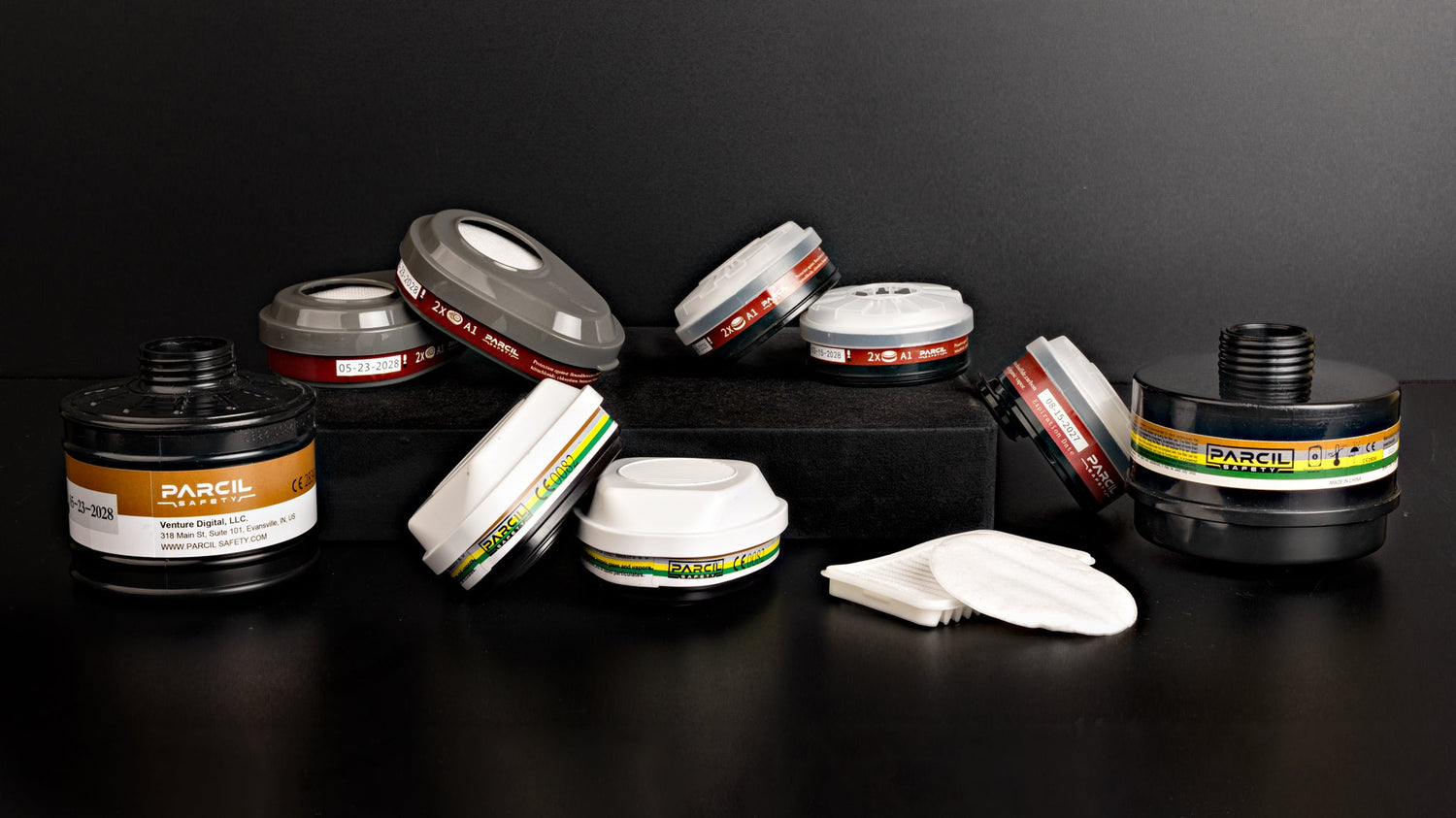What kind of respirator uses a filter or cartridge?
In the realm of respiratory protection, a crucial distinction lies in the types of filters and cartridges used in different respirator systems. Let's delve into the details to comprehend the working mechanisms of Air-Purifying Respirators (APR) and Powered Air-Purifying Respirators (PAPR) and determine the scenarios where filters, cartridges, or canisters are most apt.Types of Respirators:
Respirators are broadly categorized into two main types based on their filtration mechanisms - those that use filters and those that use cartridges.1. Respirators that use Filters:
Air-Purifying Respirators (APR) use filters as their primary means of protection. These filters are designed to trap and remove specific particles or contaminants from the air as the wearer breathes. APRs are commonly used in various industries and settings to protect individuals from inhaling harmful substances such as dust, pollen, mold spores, and other solid particles.
The filters in APRs can vary based on their intended use and the type of contaminants they are designed to capture. Particulate filters are used for solid particles, while combination filters may also incorporate elements for gas and vapor filtration.
Check out Parcil Saftey's AG-100, ST-100X, NB-100, NB-100V, NB-100E.
When to use the filter respirators?
APRs are widely employed in construction, healthcare, manufacturing, painting, and other scenarios where there is a risk of exposure to airborne particles. They provide a critical barrier against respiratory hazards, ensuring that individuals breathe in clean and safe air.2. Respirators that use Cartridges
Respirators that use cartridges are typically referred to as Cartridge Respirators or Gas Masks. These respiratory protection devices utilize cartridges to provide defense against specific gases and vapors. Cartridges contain adsorbent materials, such as activated carbon, that capture and neutralize airborne contaminants as the wearer breathes.
Check out the Parcil Saftey's range of respirators that use cartridge:
Here are some key points about respirators that use cartridges:
-
Gas Masks: Cartridge respirators are often associated with gas masks. Gas masks are designed to protect against a variety of gases and vapors, including chemical and biological agents. They find applications in military, industrial, and emergency response scenarios.
-
Chemical Cartridges: Cartridges for these respirators are tailored to target specific hazardous substances. For example, there are cartridges designed to filter out organic vapors, inorganic gases, acidic gases, and more. The selection of the appropriate cartridge depends on the nature of the airborne threats in a particular environment.
-
Dual Cartridges: Some respirators use dual cartridges, each serving a specific purpose. One cartridge may be dedicated to particulate filtration, while the other addresses gas and vapor removal. Dual cartridges provide a comprehensive solution for protection against a range of respiratory hazards.
When to Use Cartridge respirators?
-
Industrial and Healthcare Settings: Cartridge respirators are commonly used in industrial settings where workers may be exposed to various gases and vapors. Additionally, they find applications in healthcare, laboratories, and environments where protection against specific chemical agents is necessary.
-
Emergency Response: First responders, such as firefighters and disaster management teams, often rely on cartridge respirators to protect themselves from hazardous materials and gases during emergency situations.
How does an APR work?
APRs utilize filters as their primary means of protection. These filters capture solid particles suspended in the air, such as dust, smoke, or aerosols, ensuring that the wearer breathes in clean and safe air. APRs are suitable for a variety of applications, ranging from construction sites to healthcare settings.
- When the wearer breathes in, air is drawn through the filters of the APR.
- Particulate filters trap solid particles, preventing them from entering the respiratory system
How does a PAPR work?
PAPRs, while incorporating filters, go a step further by utilizing a powered fan to assist in the airflow. This powered mechanism enhances the wearer's comfort and reduces the breathing resistance associated with traditional APRs. PAPRs are often preferred in situations where an additional power source aids in delivering a continuous supply of filtered air, such as in healthcare, pharmaceutical, or industrial settings.When to use a filter, cartridge, or canister?
The decision to use filters, cartridges, or canisters depends on the nature of airborne hazards and the specific requirements of the environment.
1. Filters:
- Ideal for environments with particulate matter like dust, pollen, or mold spores.
- Commonly used in construction, woodworking, and agriculture.
2. Cartridges:
- Effective against both particles and gases or vapors.
- Widely used in industries such as construction, painting, chemical handling, and emergency response.
3. Canisters:
- Provide comprehensive and long-lasting protection.
- Utilized in industrial settings, emergency response, healthcare, military applications, and environmental cleanup.
Read here to know the difference between filter, cartridge and canisters in detail.

SHOP NOW
In summary, understanding the uses of filters, cartridges, and canisters in respiratory protection is vital for ensuring the safety of individuals in diverse environments. The choice between them depends on the specific hazards present, emphasizing the importance of making informed decisions to safeguard respiratory health.
To delve into comprehensive information regarding filters, cartridges, and canisters, you can explore the following resource.





















Leave a comment
All comments are moderated before being published.
This site is protected by hCaptcha and the hCaptcha Privacy Policy and Terms of Service apply.